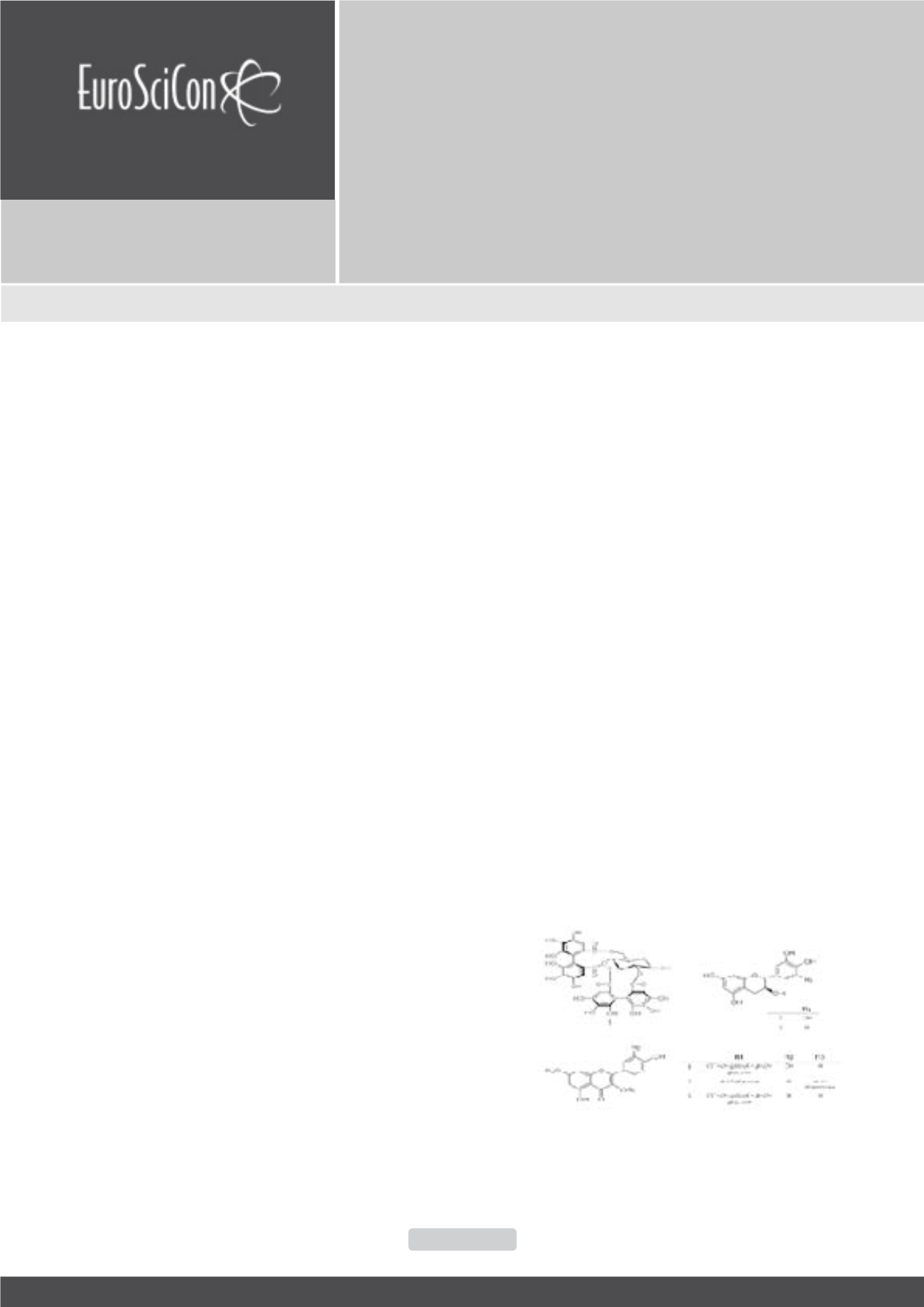

Pharmacognosy 2018
American Journal of Ethnomedicine
ISSN: 2348-9502
Page 83
April 16-17, 2018
Amsterdam, Netherlands
6
th
Edition of International Conference on
Pharmacognosy and
Medicinal Plants
Q
uercus mongolica (QM) is a species of Quercus native to
Eastern Mongolia, Siberia, China, Japan, and Korea. Species
of Quercus have been used as an oriental traditional medicine
in north-east Asia for the treatment of inflammation of the oral,
genital, or anal mucosa, and externally for inflammation of the
skin. Previous studies on the chemical composition of Quercus
species have led to the isolation of various triterpenoids,
flavonoids, and phenol glucoside gallates exhibiting a variety of
bioactivities including gastrointestinal disorders, anti-bacterial
and anti-oxidative activities. Previously, we conducted isolation
and elucidation of the structures of the known to compounds
from QM including one ellagitannin [pedunculagin (PC)], five
flavanoids [(+)-gallocatechin, (+)-catechin, quercetin-3-O-(6”-
O-galloyl)-β-D-glucopyranoside (QGG), kaempferol-3-O-β-D-
glucopyranoside-7-O-α-L-rhamnopyranoside,
kaempferol-3-O-
(6’’-galloyl)-β-D-glucopyranoside]. In this work, we measured
inhibitory activities on chemokine and cytokine production of the
extracts and compounds isolated from QM. The activities of QM
and its compounds against MCP-1, TARC, IL-6, IL-8, IL-10 and
IL-13 in keratinocytes irradiated with UVB showed that EtOAc
fraction and PC and QGG showed the best activities. Based on
the inhibitory activities of cytokines and chemokines, PC and QGG
were selected as candidate the treatment of chronic skin diseases
and evaluated their protein and mRNA levels of inflammatory
mediators including COX-2, PGE2, cytokines and chemokines in
UVB‐irradiatedHaCaTcells andalsoquantifiedbywesternblotting
and RT-PCR. PC and QGG diminished UVB-irradiated protein level
expression of COX-2 and PGE2, downstream products in dose-
dependent manners. These results suggest that PC and QGG are
potential anti-inflammatory for treating inflammation of skin.
Recent Publications
1. Thi Tam Le and Min Won Lee, et al. (2017) Anti-
Inflammatory and anti-oxidative activities of phenolic
compounds from Alnus sibirica stems fermented
by Lactobacillus plantarum subsp. argentoratensis.
Molecuels 22(9):1566.
2. Sung Hye Youn, Min Won Lee, et al. (2017) Anti-
Inflammatory andAnti-urolithiasis effects of polyphenolic
compounds from Quercus gilva Blume. Molecules
22(7):1121.
3. Manh Heun Kim, Min Won Lee, et al. (2016) Two new
phenolic compounds from the leaves of Alnus sibirica
Fisch. ex Turcz. Natural Product Research 30(2):206–
213.
4. Jun Yin, Min Won Lee (2016) Inhibitory activities of
phenolic compounds isolated from Adina rubella leaves
against 5α-reductase associated with benign prostatic
hypertrophy. Molecules 21(7):887.
5. Han Hyuk Kim, Min Won Lee, et al. (2015) Inhibition
of matrix metalloproteinase-1 and type-I procollagen
expression by phenolic compounds isolated from the
leaves of Quercus mongolica in ultraviolet-irradiated
human fibroblast cells. Archives of Pharmacal Research
38(1):11–7.
Anti-inflammatory effects of phenolic compounds from
Quercus mongolica on UVB-irradiated human skin cells
Min Won Lee
and
Han Hyuk Kim
Chung-Ang University, South Korea
Min Won Lee et al., Am J Ethnomed 2018, Volume 5
DOI: 10.21767/2348-9502-C1-006
















